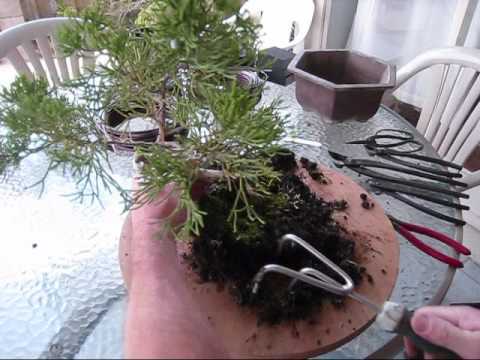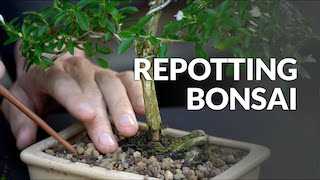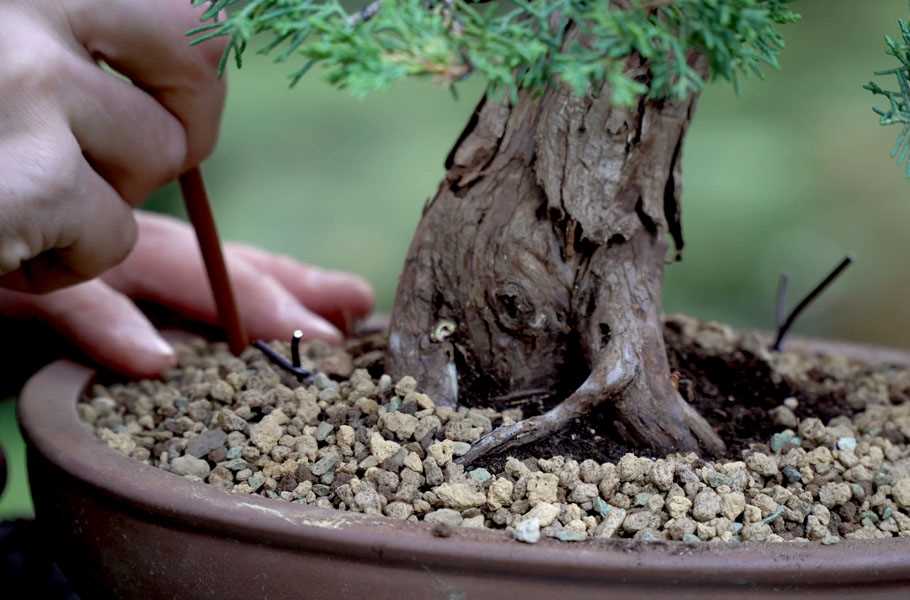- What is Juniper?
- Main Features of Juniper
- Repotting Juniper
- Introduction
- Materials Needed
- Step 1: Choose the Right Time
- Step 2: Prepare the New Pot
- Step 3: Remove the Juniper from the Current Pot
- Step 4: Prune the Roots and Branches
- Step 5: Repot the Juniper
- Step 6: Water the Juniper
- Step 7: Provide Proper Care
- Conclusion
- When to Repot Juniper?
- Signs it’s Time to Repot
- Best Time to Repot
- How Often to Repot
- How to Repot Juniper?
- 1. Choose the Right Time
- 2. Gather the Materials
- 3. Prepare the Juniper
- 4. Prepare the New Pot
- 5. Repot the Juniper
- 6. Water and Settle the Soil
- 7. Care After Repotting
- DIY Guide
- Step 1: Gather the materials
- Step 2: Prepare the pot
- Step 3: Prune and clean the juniper
- Step 4: Prepare the soil mix
- Step 5: Repot the juniper
- Step 6: Water and care for the juniper
- Step 7: Monitor and maintain
- Why Prepare Mycorrhiza?
- Benefits of Mycorrhiza in Juniper Repotting
- Benefits of Using Mycorrhiza
- How to Prepare Mycorrhiza at Home?
- Step 1: Gather the necessary materials
- Step 2: Prepare the growing medium
- Step 3: Add mycorrhizal spores
- Step 4: Mix and moisten the growing medium
- Step 5: Transplant your juniper tree
- Step 6: Water and care for your juniper tree
- Questions and Answers:
- Why is repotting important for juniper plants?
- When is the best time to repot juniper plants?
- What kind of soil mix should I use for repotting juniper?
- How often should I repot my juniper plant?
- What is mycorrhiza, and why is it beneficial for juniper plants?
- Where can I get mycorrhiza for my juniper plant?
- Can I make my own mycorrhiza at home?
- Videos: How to Grow Your Own Mycorrhizal Fungi in Chicken Manure and Wood Shavings
Repotting juniper is an essential task for every gardener who wants to maintain a healthy and thriving plant. Juniper is a popular choice in landscaping due to its attractive foliage and ability to withstand various weather conditions.
One crucial aspect of repotting juniper is the preparation of mycorrhiza. Mycorrhiza is a symbiotic relationship between a plant and a fungus, beneficial for the plant’s nutrient absorption and overall health. While you can purchase mycorrhiza from gardening stores, preparing it at home can be a cost-effective and rewarding option.
To prepare mycorrhiza at home, you will need a few simple ingredients such as potting soil, compost, and mycorrhizal fungal spores. These fungal spores can be obtained from reputable gardening suppliers or harvested from your garden. Once you have gathered the necessary materials, follow these simple steps to prepare mycorrhiza at home:
- Mix potting soil and compost in a container with a ratio of 3:1. This mixture will serve as the base for your mycorrhiza.
- Moisten the soil mixture with water until it reaches a damp but not soggy consistency. Proper moisture is crucial for the growth and development of mycorrhizal fungi.
- Add the mycorrhizal fungal spores to the soil mixture and gently mix them in. Ensure that the spores are evenly distributed throughout the soil.
- Transfer the prepared mycorrhiza into small pots or containers. You can use these pots to inoculate newly repotted juniper plants.
Tip: It is essential to sterilize the pots and tools before starting the process to prevent the introduction of harmful pathogens.
Once you have prepared the mycorrhiza, you can begin the process of repotting your juniper. Ensure that you choose a suitable pot with adequate drainage and size to accommodate the plant’s root system. Carefully remove the juniper from its current container, gently loosen the roots, and place it in the new pot filled with the prepared mycorrhiza. Complete the process by gently firming the soil around the plant and watering it thoroughly.
With the proper preparation of mycorrhiza at home and careful repotting techniques, your juniper will have the best chance of thriving and remaining healthy for years to come.
What is Juniper?
Juniper is a type of evergreen shrub or tree that belongs to the cypress family, Cupressaceae. It is part of the genus Juniperus, which includes over 50 species distributed throughout the Northern Hemisphere. Juniper plants are well-known for their distinct appearance, fragrant foliage, and ability to thrive in various climates.
The juniper genus encompasses both large trees and low-growing shrubs, providing gardeners with a wide range of options for landscaping and horticulture. While some juniper species, such as the common juniper (Juniperus communis), are native to specific regions, others have been introduced and cultivated in different parts of the world.
Main Features of Juniper
- Needles: Juniper plants usually have needle-like leaves that can range in color from green to bluish-gray. These needle-like leaves are often crowded and arranged in whorls or opposite pairs along the branches.
- Fruits: Junipers produce small cones or berries, which are typically round or oval-shaped. These fruits may take several years to ripen and can vary in color from green to blue or even black when mature.
- Growth Habits: Juniper plants exhibit a diverse range of growth habits, including spreading, upright, and prostrate forms. Some species can grow to be towering trees, while others form ground-hugging mats.
- Hardiness: Juniper plants are generally robust and can tolerate a wide range of growing conditions. They are known for their ability to withstand drought, temperature extremes, and poor soil conditions.
- Uses: Junipers have been used for various purposes throughout history. They are often planted as ornamental shrubs in gardens and landscapes. Juniper berries are also used as a spice in culinary dishes and as a flavoring in certain beverages such as gin.
As versatile and visually appealing plants, junipers have become popular choices among gardeners and bonsai enthusiasts. Their unique growth patterns, interesting foliage, and ability to adapt to different climates make them an attractive addition to any garden.
In the next sections, we will explore the process of repotting junipers and the importance of preparing mycorrhiza at home for their optimal growth and health.
Repotting Juniper
Introduction
Repotting is an essential process for maintaining the health and growth of juniper trees. This DIY guide will provide you with step-by-step instructions on how to successfully repot your juniper tree.
Materials Needed
- Potting soil
- New pot
- Pruning shears
- Watering can
Step 1: Choose the Right Time
It is important to choose the right time to repot your juniper tree. Spring is usually the best time, as it allows the tree to recover and establish roots before the hot summer months.
Step 2: Prepare the New Pot
Choose a new pot that is slightly larger than the current pot the juniper is in. Make sure the new pot has drainage holes at the bottom to prevent waterlogging. Fill the new pot with fresh potting soil.
Step 3: Remove the Juniper from the Current Pot
Gently remove the juniper tree from its current pot, taking care not to damage the roots. If the tree is tightly root-bound, you may need to use pruning shears to cut away any excess roots.
Step 4: Prune the Roots and Branches
Trim any long or damaged roots with pruning shears. Also, prune any dead or overgrown branches to promote new growth and maintain the desired shape of the tree.
Step 5: Repot the Juniper
Place the juniper in the new pot, ensuring that it is centered and upright. Gently fill the pot with potting soil, making sure to pack it around the roots firmly. Leave about an inch of space at the top to allow for watering.
Step 6: Water the Juniper
Give the juniper a good watering, making sure that the soil is evenly moist. Avoid overwatering, as this can lead to root rot. Water the tree regularly and adjust the watering frequency according to the specific needs of your juniper variety.
Step 7: Provide Proper Care

After repotting, place the juniper in an area with bright indirect sunlight. Keep the tree well-watered and monitor its growth. Provide regular fertilization and trim any excessive growth to maintain the desired shape.
Conclusion
Repotting your juniper tree is a crucial step in its long-term health and growth. By following these step-by-step instructions, you can ensure that your juniper thrives in its new pot and continues to bring beauty to your indoor or outdoor space.
When to Repot Juniper?
Knowing when to repot your juniper is crucial for its health and growth. While junipers are generally hardy plants, they do benefit from repotting every few years to ensure proper root development, nutrient absorption, and overall vigor.
Signs it’s Time to Repot
- Root Bound: If you notice that the roots of your juniper are densely packed and circling the edges of the pot, it’s a clear indication that it’s time to repot. This occurs when the plant has outgrown its current pot, and the roots have nowhere else to grow.
- Slow Growth: If your juniper is not growing as vigorously as before, it might be due to the lack of room for root expansion. Repotting can provide the plant with fresh soil and more space for healthy root growth.
- Drainage Issues: Poor drainage can lead to waterlogged soil, which can be detrimental to the health of your juniper. If you find that water takes a long time to drain out from the pot or if you see standing water at the bottom, repotting can help improve drainage.
- Fertilizer Replacement: After a few years, the nutrients in the soil can become depleted, and repotting allows you to replace the old soil with fresh potting mix containing essential nutrients.
Best Time to Repot
The best time to repot your juniper is in early spring, just before the new growth starts. This ensures that the plant has enough time to recover from the repotting process and establish new roots before the active growing season begins. Avoid repotting in the winter or during periods of extreme heat or drought.
How Often to Repot
Juniors generally benefit from repotting every 2-3 years, depending on their growth rate and root development. Younger plants may require more frequent repotting, while older and more established plants can be repotted less often, every 3-4 years.
By paying attention to the signs and repotting at the right time, you can ensure the health and vitality of your juniper plant for years to come.
How to Repot Juniper?
Repotting a juniper is an important step in its growth and development. It allows the plant to have enough space for its roots to grow, ensures proper drainage, and provides fresh nutrients. Here is a step-by-step guide on how to repot a juniper:
1. Choose the Right Time
It is recommended to repot junipers during the spring before new growth starts. This allows the plant to recover and establish itself before the hot summer months.
2. Gather the Materials
Collect all the necessary materials before starting the repotting process. You will need a new pot, well-draining soil mix, pruning shears, a chopstick or a narrow stick, and a water spray bottle.
3. Prepare the Juniper
Carefully remove the juniper from its current pot. Gently loosen the roots from the soil and remove any dead or damaged roots using pruning shears. Trim the long roots if necessary to fit the new pot.
4. Prepare the New Pot
Choose a new pot that is slightly larger than the current pot. Cover the drainage holes with a mesh or a few small stones to prevent soil from escaping. Fill the bottom of the pot with a layer of well-draining soil mix.
5. Repot the Juniper
Place the juniper in the new pot, positioning it in the center. Gradually fill the sides with the well-draining soil mix. Use a chopstick or a narrow stick to gently press the soil and remove any air pockets. Leave a small space at the top for watering.
6. Water and Settle the Soil
Water the newly repotted juniper thoroughly until water drains from the bottom. This helps to settle the soil and ensure it is evenly distributed. Avoid fertilizing for the first couple of weeks to allow the plant to adjust to its new environment.
7. Care After Repotting
Place the repotted juniper in a location with indirect sunlight. Avoid exposing it to harsh, direct sunlight or freezing temperatures. Water the juniper regularly, allowing the soil to dry slightly between waterings.
By following these steps, you can successfully repot a juniper and provide it with a healthy growing environment. Remember to monitor the plant closely after repotting and make any necessary adjustments to its care routine.
DIY Guide
Step 1: Gather the materials
Before you begin repotting your juniper, make sure you have all the necessary materials:
- Pot or container
- Well-draining soil mix
- Wire or mesh for the bottom of the pot
- Pruning shears
- Mycorrhiza inoculant
- Watering can or spray bottle
Step 2: Prepare the pot
Start by cleaning the pot or container you will be using for repotting. Make sure it has drainage holes to prevent waterlogged soil. If the holes are too large, cover them with wire or mesh to keep the soil from falling out.
Step 3: Prune and clean the juniper
Inspect your juniper and remove any dead, damaged, or overgrown branches using pruning shears. Be careful not to remove too much foliage, as this can stress the tree. Gently remove any debris or loose soil from the root system.
Step 4: Prepare the soil mix
In a separate container, mix the well-draining soil with the mycorrhiza inoculant according to the instructions on the package. The mycorrhiza will help establish a symbiotic relationship between the roots of the juniper and beneficial fungi, improving nutrient uptake and overall plant health.
Step 5: Repot the juniper

Place a layer of soil mix in the bottom of the pot, making sure it covers the wire or mesh. Carefully position the juniper in the pot, making sure it is centered. Hold the tree upright while adding more soil mix around the roots. Gently press the soil to remove any air pockets.
Step 6: Water and care for the juniper
After repotting, give the juniper a thorough watering to help settle the soil. Make sure the water reaches all the way down to the roots. Place the newly potted juniper in a spot with indirect sunlight and protect it from extreme temperatures and strong winds. Water the tree regularly, allowing the soil to dry out slightly between waterings.
Step 7: Monitor and maintain

Monitor the health of your juniper and make adjustments as needed. As the mycorrhiza establishes, you may notice increased growth and vitality in the tree. Continue to prune and shape the juniper as necessary to maintain its desired appearance. Regularly check the soil moisture levels and adjust your watering schedule as needed.
Why Prepare Mycorrhiza?

Mycorrhiza, a symbiotic relationship between fungi and plant roots, plays a crucial role in plant health and growth. By forming a mutually beneficial partnership, mycorrhizal fungi assist in nutrient acquisition, disease resistance, and water absorption.
When a plant is moved from one container to another during repotting, it is crucial to ensure that its new soil contains mycorrhizal fungi. By preparing mycorrhiza at home, you can enhance the establishment and development of these fungi, thereby promoting the overall well-being of your juniper.
Benefits of Mycorrhiza in Juniper Repotting
- Nutrient Acquisition: Mycorrhizal fungi extend their network of fine filaments called hyphae into the surrounding soil, greatly increasing the surface area for nutrient absorption. This allows the juniper to access essential nutrients more efficiently.
- Disease Resistance: Mycorrhizal fungi stimulate plant immune responses, enhancing the juniper’s ability to defend against various pathogens and diseases.
- Water Absorption: The hyphal network created by mycorrhizal fungi improves water and moisture absorption, reducing the risk of water stress for the juniper.
- Root Development: Mycorrhizal associations stimulate root growth and branching, leading to a more extensive and efficient root system in the juniper.
- Soil Structure Improvement: The hyphae produced by mycorrhizal fungi can bind soil particles together, enhancing soil structure and stability, ultimately benefiting the juniper’s root system.
Overall, by preparing mycorrhiza at home and incorporating it into the soil during juniper repotting, you can ensure that your plant receives the necessary support for optimal growth, health, and resilience.
Benefits of Using Mycorrhiza

- Mycorrhiza improves nutrient uptake: The symbiotic relationship between mycorrhizal fungi and plants allows for a more efficient uptake of nutrients, especially phosphorus. The fungi extend their hyphae into the soil, increasing the surface area for nutrient absorption and breaking down complex organic compounds into simpler forms that are easier for the plant to use.
- Enhanced plant growth: By improving nutrient uptake, mycorrhiza promotes overall plant growth and development. With better access to essential nutrients, plants can produce larger, healthier leaves, stronger stems, and increased root development. This leads to stronger, more robust plants that are more resistant to stress and diseases.
- Increase in drought tolerance: Mycorrhiza helps plants survive periods of drought by enhancing their ability to absorb water. The hyphae of mycorrhizal fungi form a network that acts like a sponge, increasing the water-holding capacity of the soil and allowing plants to access water that would otherwise be unavailable to them. This improves the overall drought tolerance of the plant.
- Improved soil structure: Mycorrhiza plays a crucial role in improving soil structure. The fungal hyphae create a network that binds soil particles together, forming aggregates that improve soil aeration and drainage. This creates a more favorable environment for plant roots to grow and allows for better nutrient and water movement in the soil.
- Protection against pathogens: Mycorrhizal fungi can help protect plants from certain soil-borne pathogens by competing with them for nutrients and space. They also produce chemical compounds that can inhibit the growth and activity of pathogens. This can help reduce the incidence and severity of diseases in plants.
- Support for environmental sustainability: The use of mycorrhiza in gardening and agriculture can contribute to environmental sustainability. By improving nutrient uptake and reducing the need for chemical fertilizers, mycorrhiza can help minimize environmental pollution and promote more sustainable farming practices.
How to Prepare Mycorrhiza at Home?
Mycorrhiza is a type of beneficial fungi that can form a symbiotic relationship with the roots of plants, including juniper trees. This relationship helps improve the nutrient uptake and overall health of the plant. If you are repotting your juniper tree and want to introduce mycorrhiza to the new soil, you can prepare it at home using the following steps:
Step 1: Gather the necessary materials
To prepare mycorrhiza at home, you will need the following materials:
- Peat moss or sphagnum moss
- Perlite or vermiculite
- Mycorrhizal fungi spores (available at gardening stores or online)
- A container or pot
- Clean water
- Gloves and a mask (optional, but recommended when handling spores)
Step 2: Prepare the growing medium
Start by mixing equal parts of peat moss or sphagnum moss with perlite or vermiculite. This mixture will provide a well-draining and nutrient-rich environment for the mycorrhiza to grow. Use a container or pot large enough to accommodate the roots of your juniper tree.
Step 3: Add mycorrhizal spores

Once the growing medium is ready, sprinkle the mycorrhizal fungi spores evenly over the surface. Follow the instructions provided with the spores for the recommended amount to use. Be careful not to inhale the spores, as they may cause respiratory irritation.
Step 4: Mix and moisten the growing medium
Using your gloved hands, gently mix the mycorrhizal spores into the growing medium to ensure even distribution. Then, moisten the mixture with clean water until it is evenly damp but not saturated.
Step 5: Transplant your juniper tree
Once the mycorrhiza preparation is ready, you can transplant your juniper tree into the new soil. Carefully remove the tree from its current pot or container, taking care not to damage the roots. Place the tree in the prepared pot with the mycorrhiza mixture, making sure the roots are well covered and the tree is stable.
Step 6: Water and care for your juniper tree
After repotting, water your juniper tree thoroughly to settle the soil and encourage root growth. From then on, follow the proper watering and care instructions for your specific juniper species to ensure its health and well-being.
By preparing mycorrhiza at home and incorporating it into the soil during repotting, you can provide your juniper tree with the benefits of this beneficial fungi, promoting its overall growth and vitality.
Questions and Answers:
Why is repotting important for juniper plants?
Repotting is important for juniper plants because it helps refresh the soil, promotes healthy root growth, and allows for better nutrient absorption.
When is the best time to repot juniper plants?
The best time to repot juniper plants is during the early spring, just before the growing season begins. This allows the plant to recover and establish new roots before the warmer weather.
What kind of soil mix should I use for repotting juniper?
For repotting juniper plants, it is best to use a well-draining soil mix that is specifically formulated for bonsai or cacti. This type of soil will help prevent root rot and ensure healthy root development.
How often should I repot my juniper plant?
Juniors should generally be repotted every 2-3 years. However, if you notice that the plant’s roots are becoming overcrowded or the soil is not draining properly, it may be necessary to repot more frequently.
What is mycorrhiza, and why is it beneficial for juniper plants?
Mycorrhiza is a beneficial fungus that forms a symbiotic relationship with plants, including junipers. It helps improve the plant’s ability to absorb water and nutrients from the soil, enhances root development, and strengthens the plant’s overall immune system.
Where can I get mycorrhiza for my juniper plant?
You can find mycorrhiza products at garden centers, nurseries, or online gardening stores. They are usually sold as a powder or granules that can be mixed with the soil during repotting.
Can I make my own mycorrhiza at home?
Yes, you can make your own mycorrhiza at home by cultivating beneficial fungi in a mixture of organic matter, such as compost or peat moss. However, this process may take some time and requires specific knowledge and conditions to be successful.







